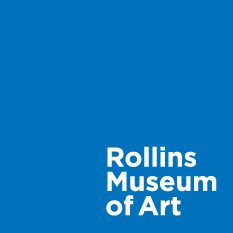F. Holland Day, the creator of this work, would be considered something of an eccentric today. In fact, he was considered something of an eccentric in his own day, as well. Day was the son of a successful businessman in Norwood, Massachusetts, and early on showed an interest—nurtured by his parents—in art and literature. Though he did not attend college, Day quickly fell in with a crowd of bohemians in Cambridge and Boston, with whom he carried out wide-ranging discussions on art, beauty, and life, often over beers in one of a number of out-of-the-way taverns on either side of the Charles River (which divides the cities of Cambridge and Boston). During this period Day became fascinated by the work of British artist and social reformer William Morris, whose Kelmscott Press produced lavish editions of works by Romantic poets and copies of illuminated Medieval manuscripts, among other delights. Determined to follow in Morris’s footsteps, Day established the firm of Copeland and Day with a friend. They quickly made an impact on the American art book market, producing the first American editions of such important works as Oscar Wilde’s Salomé and the periodical The Yellow Book, both illustrated by Aubrey Beardsley.
Work of the Week: George Grosz, “City Lights”
Grosz lived in Europe during the First World War and experienced chaos and political upheaval before he emigrated to the United States in 1933. His work is characterized by bold criticism of the political class and military officials, and a pessimistic view of society; he had joined the rebellious Dada movement in Berlin in 1918 and later, together with artists Otto Dix (1891-1969) and Max Beckmann (1884-1950), they became known as Neue Sachlichkeit or New Objectivity. During the Second World War Grosz lived in New York where he taught at the Art Students League. His encounter with the metropolis is documented in numerous works from the 1940s, which focus on various aspects of the city. The war altered life in New York with many institutions temporarily transforming their facilities to accommodate production for the war effort and implementing the dimming of neon signs and lights to avoid potential enemy attacks.
Work of the Week: Willem de Kooning, “Two Women”
Willem de Kooning (American, 1904-1997), Two Women, 1973, Lithograph on paper, 18 x 15 in. Museum Purchase from the Wally Findlay Acquisition Fund, 1997.13 A […]
Research Highlights, Part 8: The Archives of American Art
One of the best resources for those of us who study American art is undoubtedly the Archives of American Art. […]
